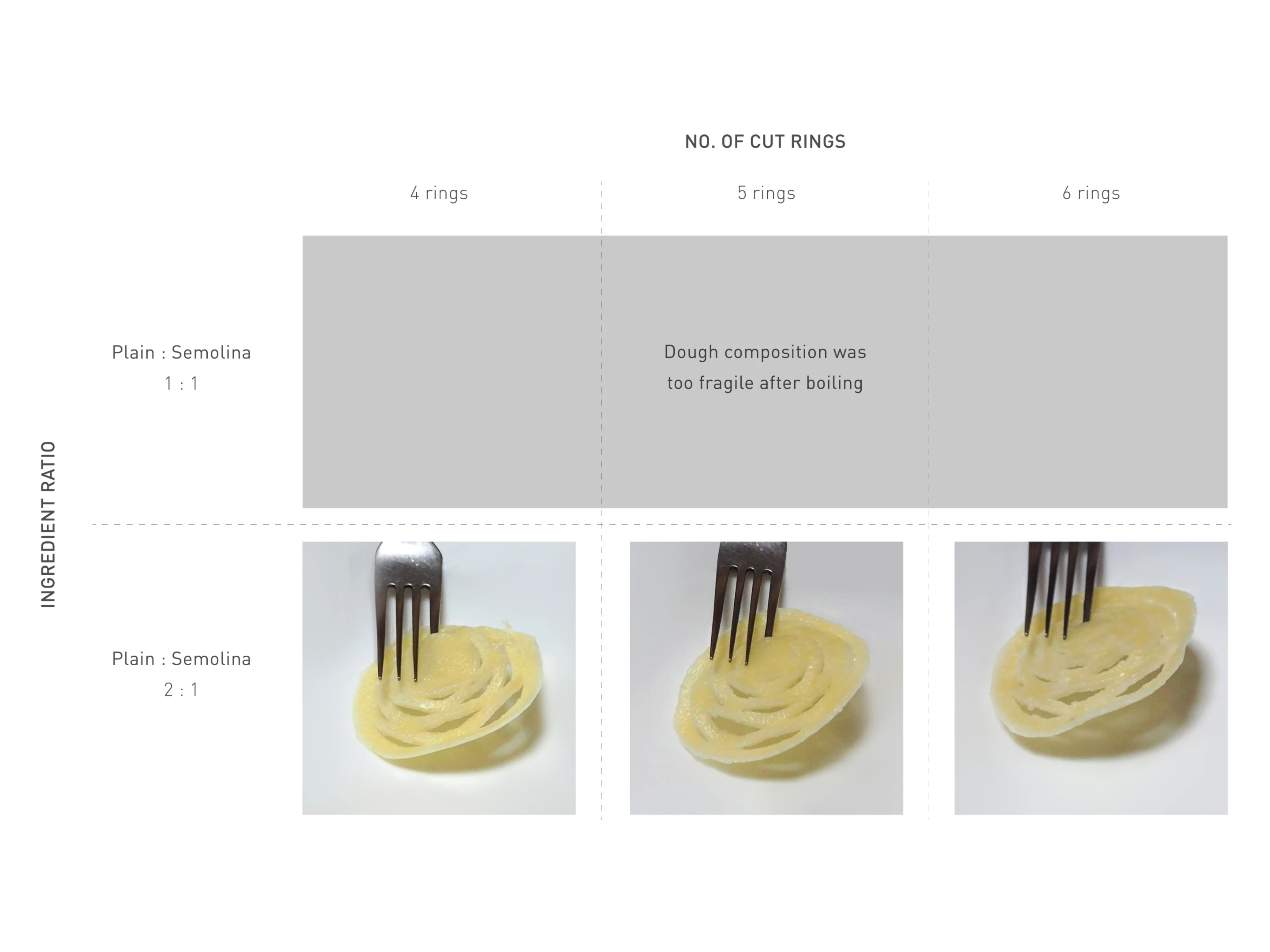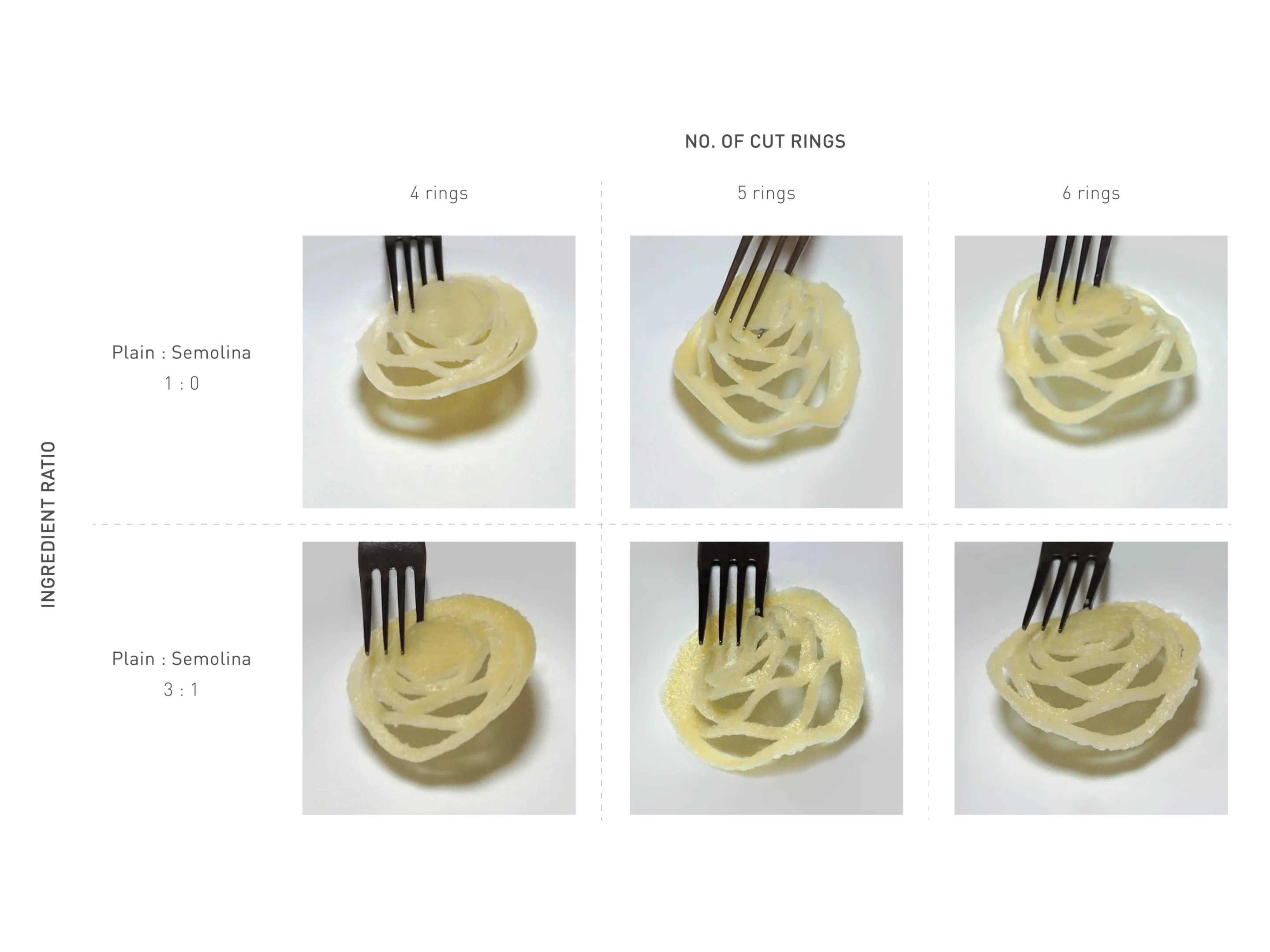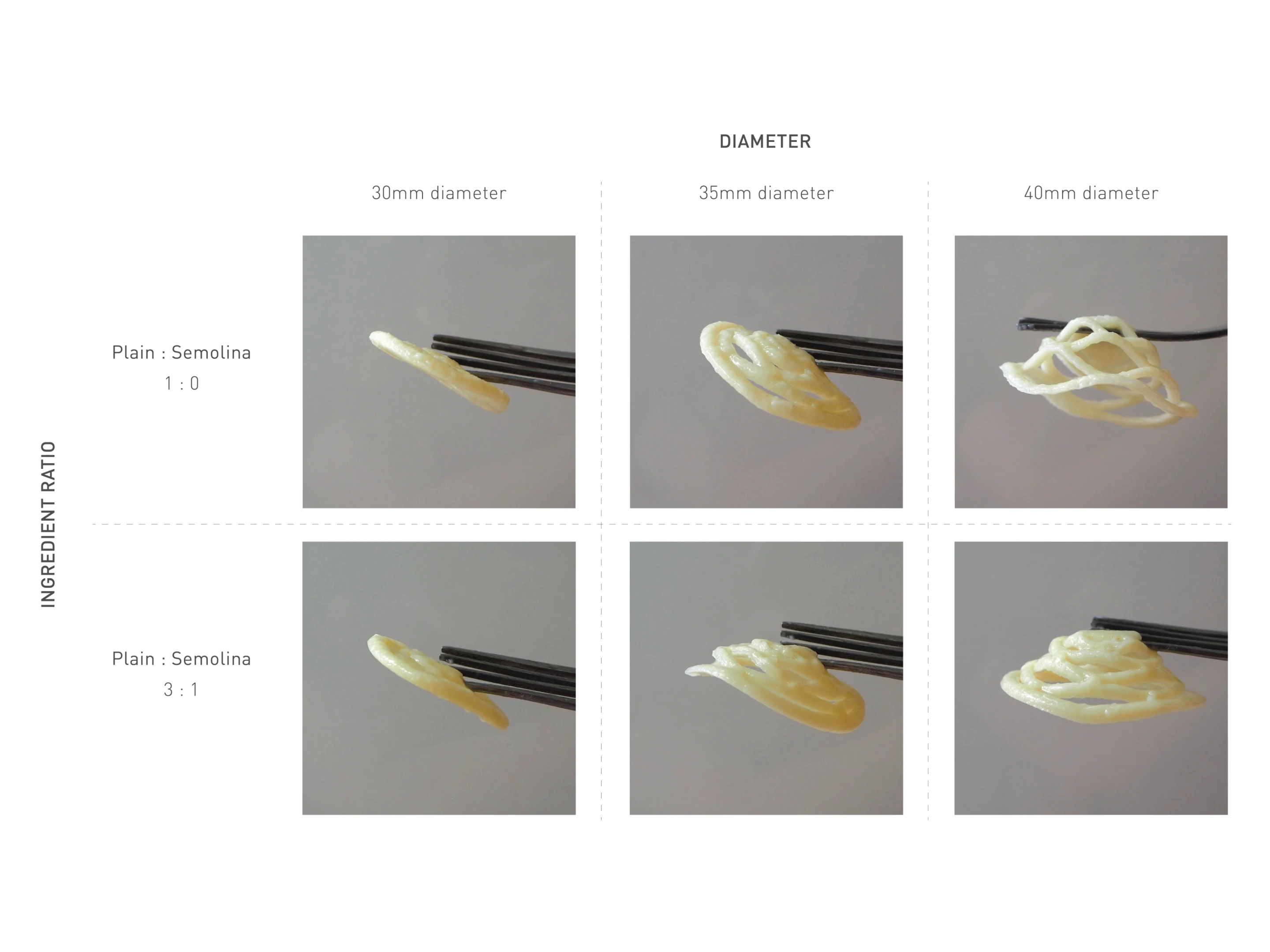Flaire
A gourmet pasta shape that evolves.
May – June 2021
Designed with Sheryl Ang

Inspired by kirigami, the Japanese art of paper cutting, Flaire is a novel pasta shape that reimagines how delight can be imbued into the traditional craft of Italian pastas. At first glance Flaire may look like a simple flat pasta, however upon lifting the fork, the intricate pattern is revealed to create a dynamic 3D form. The delicate yet sturdy structure unlocks endless possibilities for chefs to experiment. Flaire, a gourmet experience sure to bring a pleasant surprise.

Our Approach
During our research of existing dry pasta shapes, we noticed how the shape of most short pastas stayed the same before and after cooking. The nature of short pastas is usually stiffer as their length does not allow for much movement. We wondered, could we create short pastas that transforms?
We started experimenting with paper and made use of the Japanese art of origami and kirigami. Out of all our experiments, the outcomes made with kirigami stood out to us the most as it produced unique forms unlike any pasta shapes, we have seen in the market. The shape can be easily produced using a die-cut and the resultant flat shape would be economic to package. Being able to flat pack makes it space saving and more environmentally friendly overall.

However, paper and pasta are two completely different materials, what worked on paper might not work with pasta. Although dry pasta is rigid, cooked pasta becomes soft. We went through multiple trial and errors trying to emulate the effect on paper with pasta by trying out different ratios of all-purpose flour to semolina flour for our dough. We also varied the size and the number of cuts to create the best dynamic effect when the pasta is stretched out.
The Perfect Ratio
Our breakthrough came when we found the combination that best highlighted the unique shape of Flaire – 3 parts all-purpose flour to 1 part semolina flour. The 1-part semolina flour helps create the added stiffness that makes Flaire sturdy. When cooked, Flaire does not break easily when stretched. The web-like structure holds sauce well in its pockets such that each bite has an optimal coating of sauce and pasta. Due to the criss-cross patterns, taking a bite of Flaire is similar to a bite of linguine, except without the twirling.
The fun with Flaire lies not only in eating but in cooking as well. We experimented with tomato, cream and pesto sauces with varying viscosities and the shape held up well in all 3 sauces. Under the hands of more experienced chefs, the possibilities with Flaire are endless. The transformative element of Flaire visually appeals to the sight and the palate, making it a gastronomic delight for chefs and foodies alike.




